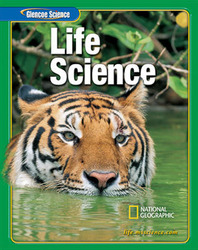1.
<a onClick="window.open('/olcweb/cgi/pluginpop.cgi?it=jpg::::/sites/dl/free/0078617022/167375/416_452_q1_q2.jpg','popWin', 'width=NaN,height=NaN,resizable,scrollbars');" href="#"><img valign="absmiddle" height="16" width="16" border="0" src="/olcweb/styles/shared/linkicons/image.gif"> (6.0K)</a>
A) A B) B C) D D) C 2.
<a onClick="window.open('/olcweb/cgi/pluginpop.cgi?it=jpg::::/sites/dl/free/0078617022/167375/416_452_q1_q2.jpg','popWin', 'width=NaN,height=NaN,resizable,scrollbars');" href="#"><img valign="absmiddle" height="16" width="16" border="0" src="/olcweb/styles/shared/linkicons/image.gif"> (6.0K)</a>
A) an amniotic egg B) an amphibian egg C) a jellylike egg D) a soft-shelled egg 3.
A) an echidna B) an opossum C) a panda D) a platypus 4.
not an adaptation that enables birds to fly?A) almost hollow skeleton B) feathers C) strong muscles D) crop 5.
A) They lay eggs with leathery shells. B) Females have an external pouch. C) Their mammary glands have well-developed nipples. D) Their embryos completely develop inside the female's uterus. 6.
A) Their young develop in eggs with leathery shells. B) Their young complete development in an external pouch. C) They feed their young milk from mammary glands. D) Their embryos completely develop inside the female's uterus. 7.
A) external pouch. B) placenta. C) mammary gland. D) ovary. 8.
A) bony tail. B) crop. C) down feathers. D) keel. 9.
<a onClick="window.open('/olcweb/cgi/pluginpop.cgi?it=jpg::::/sites/dl/free/0078617022/167375/416_453_q9_q10.jpg','popWin', 'width=NaN,height=NaN,resizable,scrollbars');" href="#"><img valign="absmiddle" height="16" width="16" border="0" src="/olcweb/styles/shared/linkicons/image.gif"> (15.0K)</a>
A) large premolars B) large canine teeth C) large molars D) the presence of incisors 10.
<a onClick="window.open('/olcweb/cgi/pluginpop.cgi?it=jpg::::/sites/dl/free/0078617022/167375/416_453_q9_q10.jpg','popWin', 'width=NaN,height=NaN,resizable,scrollbars');" href="#"><img valign="absmiddle" height="16" width="16" border="0" src="/olcweb/styles/shared/linkicons/image.gif"> (15.0K)</a>
A) only meat B) only plants C) plants and meat D) only nuts and berries














